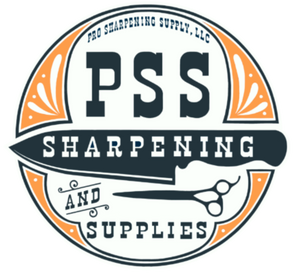Is the Bauer 8" Bench Grinder/2x28" Belt Sander from Harbor Freight the ultimate sharpening platform?

Comparing the Advantages of the Harbor Freight 2x28 Bench Grinder vs. the 1x30 Belt Sander: Which One Fits Your Needs?
When it comes to grinding, sharpening, and sanding, the tools you choose make a significant impact on both the quality of your work and your overall efficiency. You may have seen our blog post about the Harbor Freight 1x30 Belt Sander as a knife sharpening platform, and today we are going to be looking at it's "big brother", the Harbor Freight 8" Bench Grinder and 2x28" Belt Sander. Both of these tools are known for their affordability and utility, but they serve different needs, particularly when it comes to power, size, and versatility. In this post, we’ll highlight the features and capabilities of the 2x28 model, and compare these to the small but mighty 1x30 model. We’ll also explore the benefits of adding leather honing belts and honing wheels to your setup for superior edge refinement, specifically when using the 2x28 model.
Grinding and Sanding Capabilities
The most noticeable difference between the 2x28 Belt Sander and the 1x30 Belt Sander is their grinding and sanding abilities, and how they fit into various workshop needs.
The 2x28 machine features a 3/4 HP motor paired with an 8-inch bench grinder and a 2-inch by 28-inch sanding belt. The 8-inch grinder offers a large grinding surface, which makes it highly effective for handling larger tasks, such as sharpening bigger tools and equipment. The machine comes with an abrasive wheel installed that , while not necessarily useful for knife sharpening, can really grind away material quickly and make short work of repairing heavily damaged tool edges. The 2x28 sanding belt will not heat up as much as the 1x30,due to it's larger surface area, which results in less wear and longer life out of both abrasive belts and leather strops.
If you want to get a jump start on setting this machine up as a knife and tool sharpening platform, check out our 2x28 Leather Super Strop and 5 pack Silicon Carbide Sharpening Belt Assortment. This includes all of the grits you will need to go from a rough/damaged edge to a polished finish, including our Leather Super Strop and Buffing Compound. 
Additionally, an 8-inch leather honing wheel can be mounted on the machine, which offers another way to achieve high-quality honing. What I really like about this is that you can have an abrasive belt and leather stropping wheel installed at the same time, eliminating the need to stop and change the belt. In practice, you can leave a high grit belt and the leather wheel installed, allowing you to perform more frequent maintenance sharpening and honing without needing to change any belts!
One thing to note is that we prefer to turn our machine around and use it "backwards". This allows us to sharpen edge trailing on the belts vs edge leading, which is how the machine comes out of the box. We actually unscrewed the base of the machine and reinstalled it backwards so that our power switch and light are in the correct positions, you can see this in the picture at the top of the page.
Size, Space, and Portability
Another factor to consider when choosing between these two tools is the size and portability. The space available in your workshop or the need to transport the tool to different job sites can impact your decision.
The 2x28 model is larger and more robust, requiring more space in your workshop. It’s heavier and better suited for those who need a stationary tool for larger projects. While not as portable, the extra size allows for better grinding capabilities, especially for tougher materials and bigger tools.
The 1x30 model is more compact, which makes it easier to store or move between locations. If you have limited space or need a portable option for smaller tasks, this model is a great choice. Its smaller form factor is easier to handle and doesn’t take up as much room, which is a significant benefit for hobbyists or those with limited workspace. For those primarily working on smaller or more precise items, such as knives and small tools, the 1x30 model excels.
Which Should You Choose?
When deciding between the Harbor Freight 2x28 Belt Sander and the Harbor Freight 1x30 Belt Sander, consider what types of projects you’ll be working on most frequently.
Choose the 2x28 if you need a more powerful tool that can handle larger, more demanding grinding and sanding tasks. It’s perfect for general-purpose work, such as grinding, sharpening, and finishing, and is ideal for larger workshop settings where space and power are priorities. The ability to use abrasive belts and honing wheels really set it apart as a versatile way to sharpen tools of a wide range of sizes while minimizing time spent changing belts.
Choose the 1x30 if you mainly work on small items that require more precision. If you’re specifically sharpening knives or working on small tools, the 1x30 is an excellent choice. It’s compact, affordable, and provides enough versatility for light-to-medium-duty tasks, especially for hobbyists or DIY enthusiasts.
Both tools offer excellent value and can be a great addition to any workshop, but the 1x30 excels for precision work on smaller items, while the 2x28 provides better performance for larger and more varied projects. Personally, I think both tools serve different enough purposes that they both deserve a spot on your workbench.
